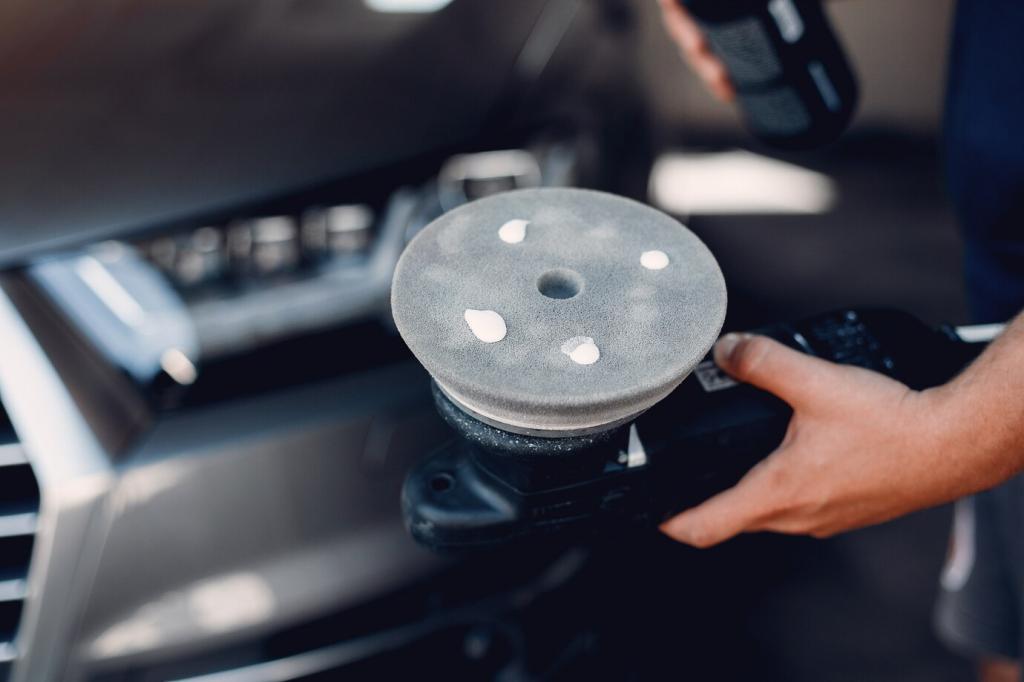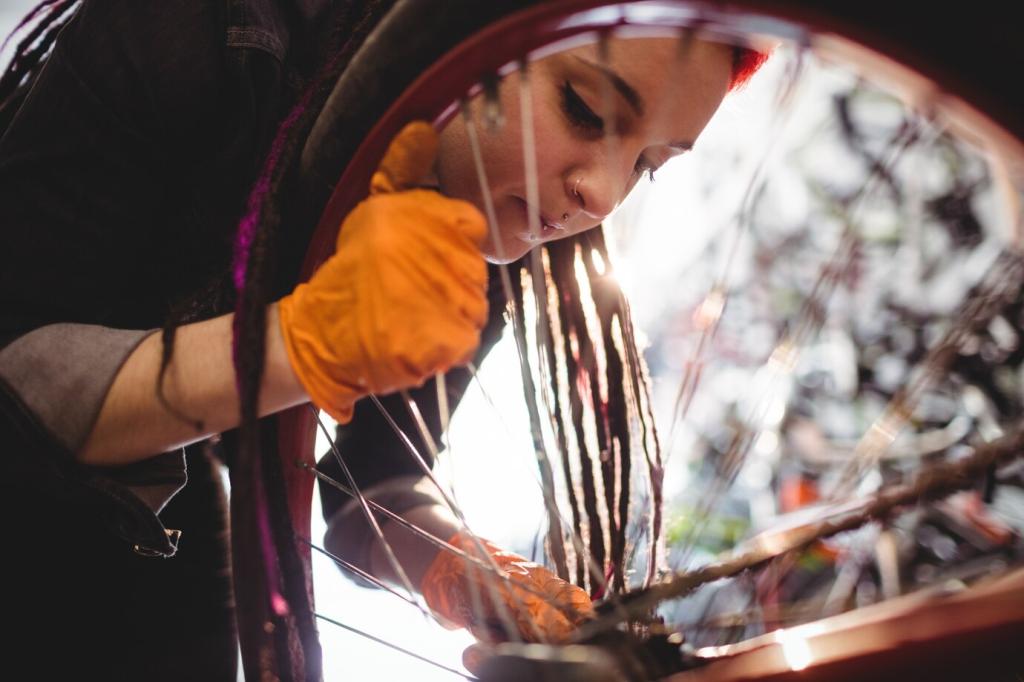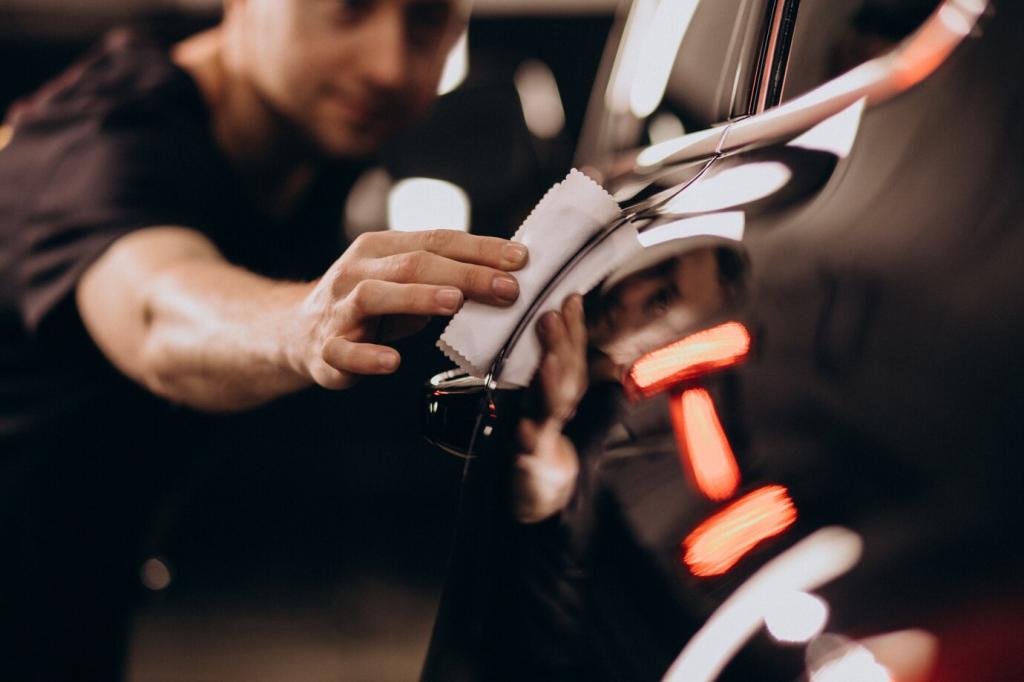Mastering Advanced Ceramic Coating Techniques
Surface Preparation: The Foundation of Every Advanced Coating
Low-temperature plasma or corona treatment increases surface energy, removes trace organics, and introduces reactive sites for silane bonding. Share your activation parameters and before‑after contact angles so we can compare adhesion improvements across plastics, glass, and painted metals.
Surface Preparation: The Foundation of Every Advanced Coating
Choosing between APTES, GPTMS, or bis-silanes demands attention to pH, solvent polarity, and hydrolysis time. Controlled condensation creates a robust molecular bridge. Comment with your favorite silane recipes and how they affected crosshatch adhesion or salt-spray hours.


Atomic Layer Deposition for Unmatched Uniformity
ALD builds ceramic films one angstrom at a time, delivering conformal coatings on complex shapes and porous substrates. If you have ALD access, share your preferred precursors and cycle counts, and how you validated thickness by ellipsometry or XRR.
Sol–Gel Dip, Spin, and Spray
Controlled hydrolysis and condensation transform alkoxysilanes into dense networks. Aging, catalyst choice, and solvent exchange shape porosity and crack resistance. Post your sol–gel ratios, spin speeds, or HVLP settings that reduced orange peel while preserving clarity.
High-Velocity and Thermal Spray Options
HVOF and plasma spray deliver thick, wear-resistant ceramic layers like alumina, titania, or YSZ. They require careful feedstock prep and substrate roughness control. Share your favorite grit profiles and torch parameters to help others balance toughness and residual stress.
Dial in time–temperature profiles using DSC and FTIR to monitor conversion. IR lamps accelerate through-cure on dark substrates, while UV assists hybrid systems. Comment with your ramp rates and how they changed pencil hardness or micro-scratch outcomes over time.
Curing and Crosslink Density: Locking Performance in Place
Ambient moisture drives silanol condensation, but excess humidity risks blush, hazing, or uneven crosslinking. Use controlled environments to balance kinetics. Share your humidity windows and tricks for maintaining gloss while maximizing chemical resistance in real garages.
Curing and Crosslink Density: Locking Performance in Place
Nanoengineering: Additives That Change the Game

Functional Nanoparticles and Photostability
TiO2 and ZnO enhance UV protection, but photocatalysis can degrade binders if untreated. Surface-treated particles mitigate reactivity while preserving transparency. Share dispersion methods, zeta potential targets, and any yellowing tests you ran after accelerated weathering.

Rheology Control for Flawless Films
Fumed silica and polyurethane thickeners deliver shear-thinning behavior, resisting sags while leveling under spray. Balance viscosity with transfer efficiency. Post your viscosity curves and which tip sizes or atomization pressures gave mirror finishes without dry spray.

Low Surface Energy Without Regrets
Fluorinated groups deliver low sliding angles, yet regulatory trends push PFAS alternatives. Silicone–fluorine hybrids and hyperbranched siloxanes are promising. Tell us how you achieved durable hydrophobicity without compromising compliance or long-term environmental goals.
Testing and Metrology: Proving the Advanced Claims
Static angles can mislead; hysteresis and roll-off reveal true anti-wetting behavior and contamination tolerance. Share goniometer setups, droplet sizes, and how your angles changed after detergent cycles or winter exposure.



Maintenance, Refresh, and Lifecycle Strategy
pH-neutral shampoos, iron removers, and chelators lift bonded grime without eroding the network. Maintain low mechanical load to preserve gloss. Share your decon cadence and which steps most restored contact angles after dusty seasons.
Maintenance, Refresh, and Lifecycle Strategy
Thin SiO2-rich toppers can refresh slip and gloss if they bond chemically, not just sit physically. Light activation wipes improve coupling. Tell us which toppers extended durability meaningfully and how you quantified changes in sliding angle.


